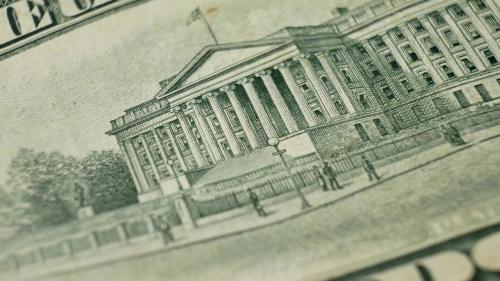In a policy brief released two weeks ago on the Brookings website, we evaluated the impact on income inequality of raising the top marginal income-tax rate as high as 50 percent. We considered two baseline cases: assigning the new revenue without explicit redistribution and alternatively redistributing all of the new revenue to households in the bottom 20 percent of the income distribution. We concluded that raising the top marginal income tax rate, by itself, would have little effect on the overall inequality of income and that raising the rate and using the funds to support the bottom 20 percent of households would boost the income of the latter group but, again, not have that much effect on the overall level of inequality.
We are grateful to those who have weighed in on this analysis via social media and email. The purpose of this note is to respond briefly and promptly to some of the reactions we have received.
I. Background and Context
Income inequality has been rising in the United States for years. Although not all inequality is bad or counterproductive, the steady rise in inequality has prompted policymakers and researchers to look for ways to stem and reverse the trends. Perhaps the most daunting aspect of addressing long-term trends in inequality is the sheer magnitude of the rise in income inequality over time. For example, Larry Summers has noted that to restore the 1979 distribution of income would require a shift of about $1 trillion (about 5.6 percent of GDP) away from the top 1 percent and toward the bottom 80 percent.
An implication of Summers’ point is that it would take massive policies to undo all or most of the rise in inequality that has occurred. Thus, it should not be surprising that the policies that we examine – policies that are an order of magnitude smaller than $1 trillion, but still are large relative to those considered to be in the realm of the politically feasible – do not offset much of the overall increase in inequality that has occurred over the past 35 years.
II. Analysis and Extensions
In our earlier work, we described the results of a simulation analysis that quantified the decline in overall after-tax, after-transfer income inequality that would result from raising the top personal income tax rate by more than 10 percentage points – to 50 percent. We found that the effect on overall income inequality across households, as captured by the Gini coefficient, was small. If, hypothetically, all of the revenue from that policy change were redistributed to the bottom 20 percent of households, the Gini coefficient still does not change much, though the 99/10 ratio of household income would fall appreciably, because households at the 10th percentile would see a sizable increase in income.
One reaction to our work has taken issue with our use of the Gini coefficient. We used the Gini coefficient as our primary measure because, despite its limitations, it remains the dominant measure of inequality used in policy debates. We acknowledge that the Gini coefficient is more sensitive to changes in the middle of the income distribution than in the tails of that distribution. But our results are not substantially affected by employing the alternative metric (suggested by Marshall Steinbaum) of the top 1 percent’s share of income, as reported in Table 1 below. (For simplicity, we ignore behavioral responses here.)
Table 1: Gini and top 1 percent share under current law and simulated reform
|
After-tax income |
Gini |
Top 1 percent share |
|
Current law |
.574 |
.1640 |
|
Top rate to 50 percent |
.571 |
.1571 |
|
Top rate to 50 percent and redistribute revenue to bottom 20 percent |
.560 |
.1558 |
Source: Urban-Brookings Tax Policy Center model
With targeted redistribution of the revenue raised, increasing the top marginal tax rate to 50 percent would reduce the after-tax Gini coefficient by 2.4 percent (from .574 to .560) and reduce the top 1 percent share by 5 percent (from .1640 to .1558). We do not believe using the top 1 percent share materially changes the conclusion: whether the policy reduces inequality by 2.4 percent or 5 percent, we would continue to characterize it as small relative to overall inequality.
A second criticism that we received is that these changes would appear large if compared to changes in long-term inequality trends. Since the TPC model does not have historical data, we have to turn to alternate sources to make comparisons for changes over time. The data below are from the Congressional Budget Office, which captures somewhat different concepts of income and have different units of analysis than the TPC model. Nonetheless, these numbers can be used to provide some useful context.
Table 2: Trends in Gini and Top 1% share of after-tax income
|
1979 |
2007 |
2011 |
Change, 1979-2007 |
Change, 1979-2011 |
|
|
After-benefit, after-tax income: Gini |
.358 |
.465 |
.436 |
0.107 (29.9%) |
0.078 (21.8%) |
|
After-benefit, after-tax income: top 1% share |
.074 |
.167 |
.126 |
0.093 (126%) |
0.052 (70.3%) |
Source:
Congressional Budget Office. 2014. The Distribution of Household Income and Federal Taxes, 2011.
http://www.cbo.gov/publication/49440
Table 3: Share of trend offset by raising top marginal tax rate
|
Change in Gini |
Share remaining of change 1979-2007 |
Share remaining of change 1979-2011 |
Change in top 1 percent |
Share remaining of change 1979-2007 |
Share remaining of change 1979-2011 |
|
|
Top rate to 50 percent |
-0.003 |
97.2% |
96.2% |
-0.0069 |
92.6% |
86.7% |
|
Top rate to 50 percent and redistribute revenue to bottom 20 percent |
-0.014 |
86.9% |
82.1% |
-0.0082 |
91.2% |
84.2% |
Source: Table 1 and 2
A comparison of the changes in after-tax inequality measures from the TPC model and the changes in these measures over time indicates that raising the top marginal tax rate to 50 percent would leave in place between 82 and 97 percent of the increase in inequality since 1979 (see Table 3). This estimate is not precise, because it depends on the end year used (2007 or 2011), the metric used, whether the revenue is redistributed, and it introduces potential inaccuracies from mixing data produced by the TPC model with those computed by the CBO methodology. Nonetheless, it suggests to us that the changes produced by our simulated tax increase leaves in place the vast majority of the long-term trend of widening income inequality. Note also that, again, looking at the top 1 percent share does not give a different impression than does looking at the Gini coefficient.
A third reaction to our analysis is that the proposal we analyzed was not ambitious enough, in that it only applied to the top marginal tax rate – and thus a very small share of tax filing units – and only applied to ordinary income. A policy of increasing the top marginal tax rate to 50 percent, much less fully redistributing all the revenue to the bottom 20 percent, does not strike us as a modest proposal. Indeed, it is clearly beyond the politically feasible in the near future. Nonetheless, we agree that other policy options are possible. In particular, policies that raised the tax rates on capital gains and dividends or that taxed accrued wealth could well be targeted more closely on the income of the extremely wealthy. However, given the concern about the Gini’s lack of responsiveness to extremes, it is unclear how much this would affect the Gini coefficient. Our point is merely that an increase in the top marginal tax rate by itself would not do much to reduce after-tax income inequality.
III. Conclusions and Interpretations
Our analysis focused on the top marginal tax rate and on overall income inequality because there is a lot of policy and political attention paid to these two particular issues. The results of our straightforward simulation analysis cast doubt on the notion that one could do much to stop or reverse the long-term trends in income distribution solely by raising the top rate, even by amounts that are admittedly larger than politically palatable. One reason is that the widening of the income distribution that has been going on for a long time has created vast disparities in income that are not limited to just the very top of the distribution. A second reason is that much of the income going to the wealthiest households takes the form of capital gains, dividends, or accrued but unrealized wealth, none of which is affected by changes in the ordinary income tax rate.
A related reason is that the overall size of the modeled reduction in after-tax income for top income households is not big relative to income distribution trends. Whereas Summers noted that it would require a $1 trillion shift in resources to offset the long-term impacts of inequality, raising the top tax rate to 50 percent would yield one-tenth as much – something like $96 billion in revenue (and presumably less if we adjusted for behavioral responses).
As we stated in the initial draft, “our results do not speak to the desirability of the tax-and-transfer policy” that we examined. It would be quite possible to combine the policies we explored with others and make a more notable dent into inequality. However, it appears that no single policy within the realm of the politically feasible could in fact substantially offset the long-term, powerful trends in income inequality. Our analysis helps make that point.


Commentary
Raising the top marginal tax rate would not do much to reduce overall income inequality – additional observations
October 12, 2015